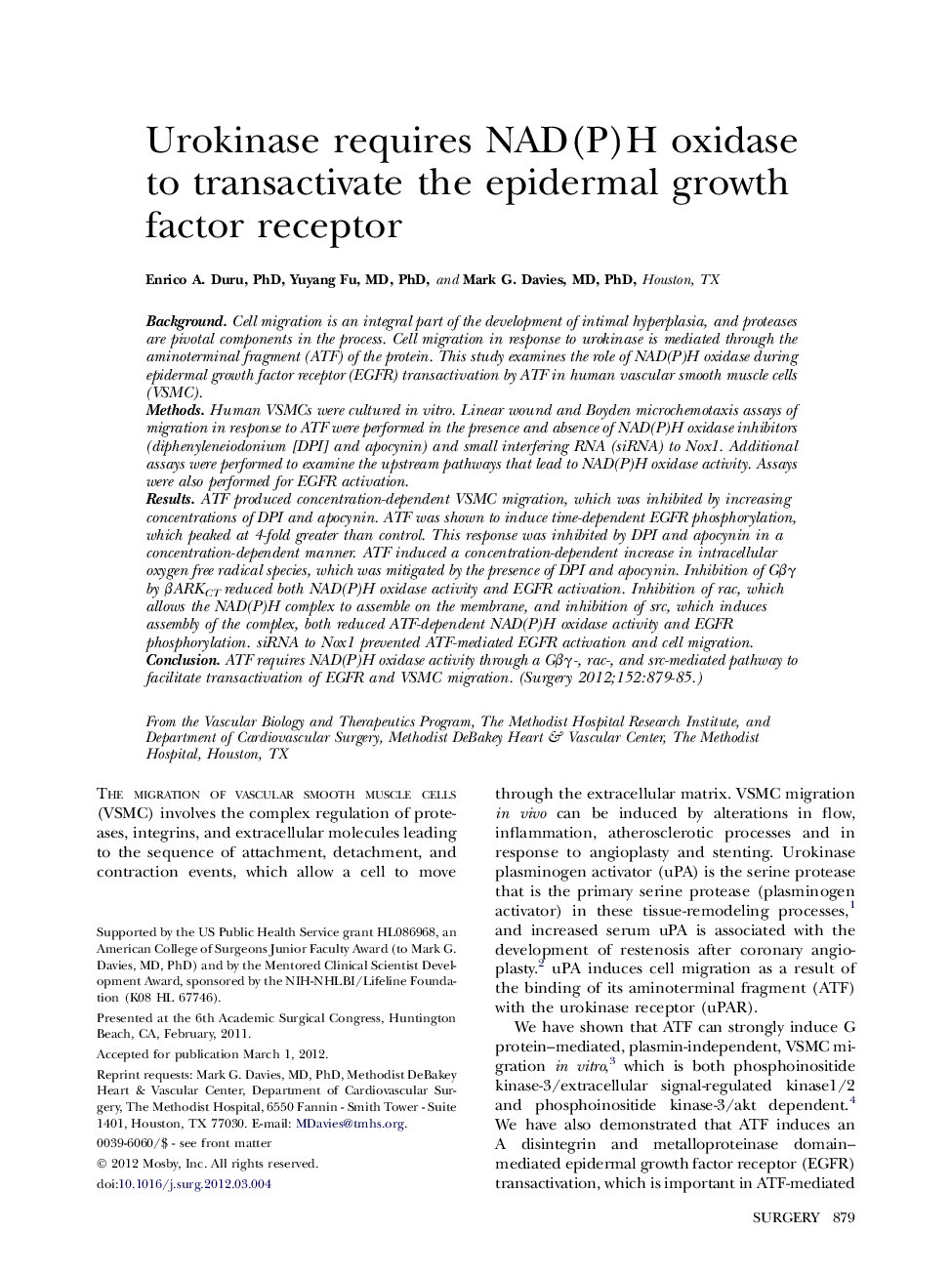| Article ID | Journal | Published Year | Pages | File Type |
|---|---|---|---|---|
| 4307250 | Surgery | 2012 | 7 Pages |
BackgroundCell migration is an integral part of the development of intimal hyperplasia, and proteases are pivotal components in the process. Cell migration in response to urokinase is mediated through the aminoterminal fragment (ATF) of the protein. This study examines the role of NAD(P)H oxidase during epidermal growth factor receptor (EGFR) transactivation by ATF in human vascular smooth muscle cells (VSMC).MethodsHuman VSMCs were cultured in vitro. Linear wound and Boyden microchemotaxis assays of migration in response to ATF were performed in the presence and absence of NAD(P)H oxidase inhibitors (diphenyleneiodonium [DPI] and apocynin) and small interfering RNA (siRNA) to Nox1. Additional assays were performed to examine the upstream pathways that lead to NAD(P)H oxidase activity. Assays were also performed for EGFR activation.ResultsATF produced concentration-dependent VSMC migration, which was inhibited by increasing concentrations of DPI and apocynin. ATF was shown to induce time-dependent EGFR phosphorylation, which peaked at 4-fold greater than control. This response was inhibited by DPI and apocynin in a concentration-dependent manner. ATF induced a concentration-dependent increase in intracellular oxygen free radical species, which was mitigated by the presence of DPI and apocynin. Inhibition of Gβγ by βARKCT reduced both NAD(P)H oxidase activity and EGFR activation. Inhibition of rac, which allows the NAD(P)H complex to assemble on the membrane, and inhibition of src, which induces assembly of the complex, both reduced ATF-dependent NAD(P)H oxidase activity and EGFR phosphorylation. siRNA to Nox1 prevented ATF-mediated EGFR activation and cell migration.ConclusionATF requires NAD(P)H oxidase activity through a Gβγ-, rac-, and src-mediated pathway to facilitate transactivation of EGFR and VSMC migration.
